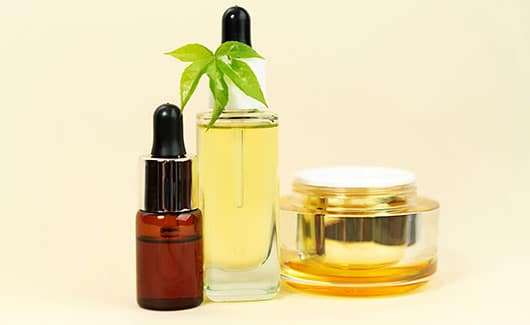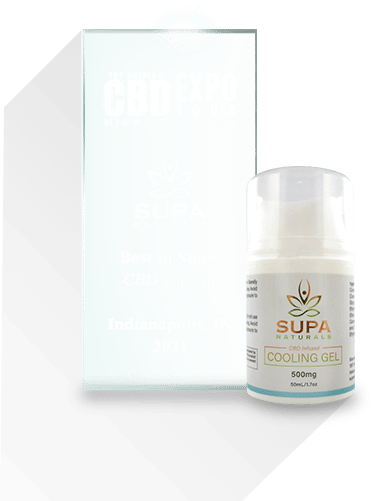How CBD Oil Is Made?

CBD (Cannabidiol) is one of more than 100 chemical compounds known as cannabinoids present in the marijuana or cannabis plant. This natural, non-psychoactive concentrate is becoming increasingly popular in the health and wellness world. Research shows it can treat a wide range of ailments, including epilepsy, chronic pain, and anxiety.
A wide selection of CBD products is available on the market, so it can be challenging to choose the best for your needs. Understanding how CBD is made can make it easier for you to know genuine products from counterfeits.
This article takes a detailed look at how CBD oil is made and how you can benefit from different CBD products.
The Hemp Plant Growing Process
CBD production starts from cultivating hemp, the plant from which CBD oil is extracted. Farmers select legal hemp strains that have the best potential to produce high levels of CBD and terpenes and low THC levels.
Farmers can grow hemp directly from seeds or clone it from small parts of plant tissue. However, most farmers prefer cloning as it promotes a quick production of vast numbers of genetically identical plants. With cloning, you can be sure of each plant’s quality.
Young hemp plants are grown to maturity outdoors, well-spaced to allow each plant to spread out to its full size. It also allows natural light to reach the whole plant, resulting in healthy, CBD-rich plants.
How CBD Oil Is Made – The Extraction Process
Once the hemp plants mature, farmers harvest and spread them out in large barns to dry. The next step of the process is to mill the dry hemp into a fine powder. CBD is then extracted from the raw hemp.
There are several ways to extract CBD from hemp to make various CBD products. Each extraction method has its pros and cons. The extraction process results in a dark oil known as ‘crude’ as it contains the beneficial cannabinoids and terpenes and other plant compounds such as fatty acids and chlorophyll.
CBD manufacturers usually process crude oil further to produce the final product. Let’s look at various CBD extraction methods.
Supercritical CO2 Extraction
Many CBD manufacturers consider CO2 extraction as a gold standard for producing CBD-rich extracts. This extraction method involves subjecting carbon dioxide to high pressure while maintaining low temperatures. This pressure transforms the gas into a liquid, which passes through the plant material with up to 90% extraction efficiency.
The final product is highly concentrated, pure CBD extract. Supercritical CO2 requires advanced equipment and experienced operators. That means it’s usually more expensive than other extraction methods.
Its most significant advantage is that the resulting CBD oil usually requires less post-processing than other extraction methods.
Ethanol Extraction
Many CBD manufacturers prefer ethanol extraction for its exceptional safety, simplicity, and effectiveness. This method involves using high-grade grain alcohol as a solvent to separate beneficial cannabinoids, including CBD, from the plant itself.
You can use this extraction process under warm or cold conditions. It’s often more time-efficient than other extraction methods.
Hydrocarbon Extraction
 Hydrocarbon extraction is one of the simplest and cheapest CBD oil extraction processes. It involves using a light hydrocarbon solvent like butane, propane, hexane, or isopropyl alcohol to extract CBD oil from the hemp plant. These hydrocarbons can effectively extract CBD oil thanks to their low boiling point.
Hydrocarbon extraction is one of the simplest and cheapest CBD oil extraction processes. It involves using a light hydrocarbon solvent like butane, propane, hexane, or isopropyl alcohol to extract CBD oil from the hemp plant. These hydrocarbons can effectively extract CBD oil thanks to their low boiling point.
While hydrocarbon extraction is simple and less expensive than other methods, it has several drawbacks. It often produces an oil with a lower concentration of CBD and terpenes and a higher THC concentration.
It may also result in an unsafe residue that can be harmful to your health. Most commercial CBD manufacturers avoid this method as they consider it inefficient and dangerous.
Oil Infusion Extraction
Oil infusion is one of the oldest CBD oil extraction techniques. Many home growers use it because of its simplicity. Before you start extracting CBD utilizing this method, you need first to decarboxylate the hemp plant.
Alternatively, you can heat the plant to a specific temperature to activate the compounds. Next, add it to a carrier oil, like olive oil, and heat it at 100°C for about an hour.
The major drawback of this technique is that you need to use a lot of oil to get the desired cannabinoid concentration since you can’t evaporate olive oil from the CBD oil.
After the extraction, you need to distill the extracted oil to separate the individual compounds, including CBD. You achieve this through the winterization and short path distillation processes.
Winterization
Winterization is the process of removing unwanted compounds extracted from the hemp plant. These compounds include waxes, lipids, and fats. This process is useful only when you extracted the oil at high pressure or high temperature.
High pressure/temperature extraction is so intense that it pulls everything from the plant. That’s why we refer to the extracted oil as ‘crude’ oil that needs refining.
The winterization process involves mixing the oil with 200 proof alcohol and stirring it thoroughly until fully combined. You then keep the mixture in a deep freezer overnight. The next morning, you should have a cloudy-looking solution.
It would be best if you filter this mixture. You can do that by running it through a filter paper into an extraction jar. Once you’ve filtered the mixture to the desired quality and all the unwanted compounds are eliminated, the next step is to remove the alcohol.
Alcohol removal is done by warming the mixture. Alcohol has a lower boiling point than oil, so it evaporates as you heat the mixture.
Short Path Distillation
After winterization, the oil undergoes short path distillation to refine the CBD extract further and isolate the CBD. This process involves heating the extraction, resulting in isolating each compound since each has a different boiling point, which means you can separate each part and use it by itself.
CBD Testing
 The testing process involves examining the CBD oil for cannabinoid content efficiency and safety before releasing it to consumers. Experienced CBD specialists test the product for degradation, damage, or contamination to ensure consumers get safe, reliable CBD products.
The testing process involves examining the CBD oil for cannabinoid content efficiency and safety before releasing it to consumers. Experienced CBD specialists test the product for degradation, damage, or contamination to ensure consumers get safe, reliable CBD products.
Decarboxylation
Decarboxylation is a heating process that turns CBD into a form that the body can easily use. Decarboxylated cannabinoids can immediately interact with the cannabinoid receptors in the endocannabinoid system. Most CBD oil products go through this process after extraction and distillation processes.
Types of CBD
To ensure you buy the right CBD oil from SUPA Naturals and other CBD oil suppliers, you need to understand CBD’s most common types and their benefits, including CBD isolate, full-spectrum CBD, and broad-spectrum CBD.
CBD Isolate
CBD isolate only contains CBD, making it the purest type of CBD. It is created by removing all other cannabinoids and terpenes during extraction, leaving only CBD molecules behind. The isolates are then used in making various CBD oil products, such as CBD oil tinctures and CBD gummies.
CBD isolate-based products are a favorite for first-time consumers of cannabis-related products. They’re also ideal for those who can’t take risks regarding THC content, such as professional athletes. The primary disadvantage of isolates is that they lack other potentially beneficial cannabinoids and terpenes.
Full-Spectrum CBD
 Full-spectrum CBD delivers all the cannabinoids and terpenes in the plant from which you extracted your CBD. That means it contains all the compounds absent in the CBD isolate and traces of THC. The level of THC in full-spectrum CBD is so low that it won’t make you high.
Full-spectrum CBD delivers all the cannabinoids and terpenes in the plant from which you extracted your CBD. That means it contains all the compounds absent in the CBD isolate and traces of THC. The level of THC in full-spectrum CBD is so low that it won’t make you high.
However, if you use full-spectrum products for a prolonged time, THC can accumulate in your system and return a positive result on highly sensitive drug tests. It’s worth noting that the amounts of CBD and other cannabinoids in full-spectrum products depend on the plant’s potency from which the CBD came.
Broad-Spectrum CBD
Broad-spectrum CBD sits somewhere between CBD isolates and full-spectrum CBD. Broad-spectrum CBD products are created by removing THC molecules from full-spectrum CBD.
The major drawback of this type of CBD is that there’s a possibility that not all THC was removed entirely. That means prolonged use may lead to THC build-up in your system, which can return false-positive results in some drug tests.
Three Beneficial CBD Products You Can Buy
While you can consume CBD oil directly after extraction, filtration, and testing, leading suppliers like SUPA Naturals offer a wide range of CBD oil products, each with a specific use and method of delivery. Therefore, it’s essential to understand each product and what it does, to help you choose the best one for your specific needs.
CBD Oil Tinctures
CBD tinctures are CBD isolate or full-spectrum CBD mixed with ethanol, vegetable glycerin, medium-chain triglyceride (MCT) oil, or any other carrier oil. They are the most popular way to use CBD. You administer tinctures by putting a few drops on or under your tongue.
For the best results, you should allow the tincture to rest under your tongue for at least 30 seconds before swallowing. By doing this, you enable the CBD to enter your bloodstream and get to work more quickly. You can also mix CBD tinctures into smoothies, yogurt, ice cream, and other foods.
The best advantage of CBD tinctures is that you can easily adjust the dosage to suit your comfort level and determine what works best for you. Dosage usually ranges from 100mg to 1000mg. SUPA Naturals offers full-spectrum CBD oil tinctures made with CBD-rich hemp plants and almost zero THC content.
CBD Edibles
CBD edibles are simple food infused with CBD. Their primary benefit is that they allow you to get your daily dosage of CBD easily and quickly. CBD gummies are the most common CBD edibles. They are a safe, fast, and effective way to take CBD if you’re trying it for the first time.
CBD Topicals
CBD topicals include balms, lotions, salves, shampoos, and oils infused with CBD. They aren’t ingestible and don’t go into your bloodstream directly. You apply them directly to your skin or hair to take advantage of CBD’s benefits.
CBD topicals have a vast range of uses, such as relieving post-workout soreness and other minor aches. They’re a favorite for those who need fast-acting, targeted relief, such as professional athletes.
There are also CBD products for pets, which include CBD dog and cat treats and CBD oil for pets. It’s worth noting that all mammals have a standard endocannabinoid system. SUPA Naturals offers full-spectrum premium grade CBD pet tinctures that are soy- and gluten-free.
How To Make CBD Oil at Home

You can make your own CBD oil from CBD paste. However, it won’t be the same quality as the CBD oil you get from SUPA Naturals. The advantage is that you can customize the oil to your specific needs.
Follow the steps below:
- Decide the desired potency of your oil. With a syringe of 50% paste containing 2500mg, you can get the following concentrations of CBD:
- ¼ syringe – 6.25% CBD oil
- ½ syringe – 12.5% CBD oil
- ¾ syringe – 18.75% CBD oil
- Full syringe – 25% CBD oil
- Add your preferred amount of paste to a sterilized 10ml bottle.
- Add your preferred carrier oil to the paste, leaving a 1-2 cm space at the top. Some of the best oils include olive oil, coconut oil, and hemp seed oil.
- Close the bottle tightly before shaking it thoroughly.
- Leave your oil to settle for about an hour before shaking it again.
- Open the bottle and add the rest of the oil to full. Close the bottle and shake it again.
- You can now use your home-made CBD oil. Always shake the oil before use.
Final Thoughts
CBD is rapidly growing in popularity globally, thanks to its wide range of health and wellness benefits. However, with the numerous options of CBD oil products available on the market, it can be challenging to find genuine products. Knowing how CBD Oil is made can help you choose the best CBD products for your needs. If you want to learn more about CBD or you are looking for high-quality CBD products, has you covered.






